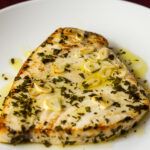|
The New York town I grew up in, Mount Vernon, had a several good Italian bakeries, plus it was 15 minutes from Arthur Avenue, the Bronx’s Little Italy. Therefore, I became accustomed to being able to pick up a fresh loaf of delicious Italian bread in minutes. Now I live in Ridgefield, CT a very nice little New England town, but alas no Italian bakery. What’s an Italian boy to do? Drive an hour to Arthur Avenue and an hour back just for a loaf of bread? I still make an occasional trip to Arthur Avenue to eat at one of the restaurants or pick up sopressata, cheese, etc., but I can hardly do that every time I want bread. Get used to the hot dog buns supermarkets try to pass off as Italian bread? Never!!! There was only one solution left, learn how to bake my own bread.
After much research I picked up Carol Field’s The Italian Baker. I was baking the most delicious Italian bread in no time. This book is loaded with recipes for traditional loaves from every region of Italy. The first time you make a crusty Pane Pugliese with its big-holed, chewy interior you will be hooked. However, don’t stop there. Try the golden Pane Tipo Altamura; made with durum flour, this has become my most popular bread. Other breads I make on a regular basis are Pane di Como, Ciabatta and a rustic whole-wheat bread, Pan Bigio. Most of these breads begin with a starter called a biga in Italian, which is made the day before and left out to ferment at room temperature. The biga “produces a secondary fermentation from which come the wonderful aroma, natural flavor, and special porosity of the final loaves and wheels of bread,” says Carol Field. You can make extra biga and freeze it for use later. Just let it defrost at room temperature for a few hours and it will be bubbling and ready to use (contrary to popular belief the cold doesn’t kill yeast, it just slows it down). You can also freeze the finished loaves of bread and defrost them at a later date. The author recommends wrapping them first in aluminum foil then plastic wrap. Just take them from the freezer remove the plastic wrap and place them in a 350-degree oven for 15 to 30 minutes and they are ready to serve. Sometimes I slice the loaves, put the slices in sandwich bags and freeze them. Then for breakfast I take a couple of slices out and pop them in the toaster. Nothing beats a toasted Ciabatta with butter for breakfast. Talk about your nooks and crannies! There are newer bread baking books out there (this was first published in 1991) that cover more than just Italian bread, but I find that when it comes to the Italian breads the recipes in those books just don’t come out the way I think Italian bread should be. The authenticity of the bread coupled with the recipes for pizza, focaccia, and Italian tarts, cakes and cookies make this a book a must for anybody interested in Italian baking. |






